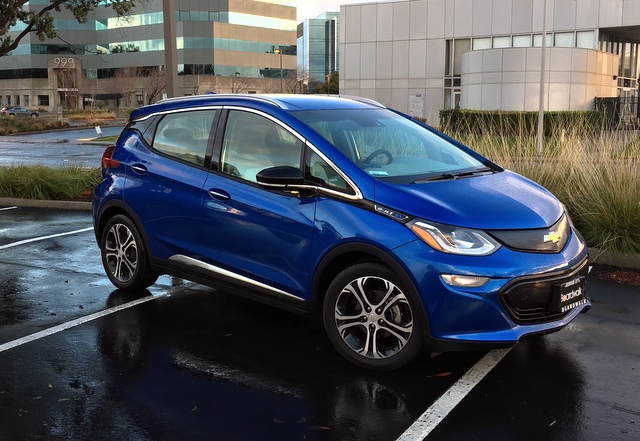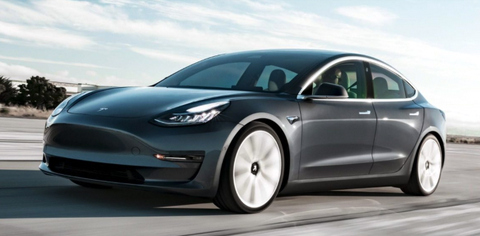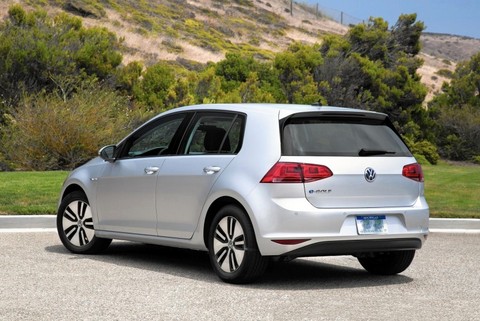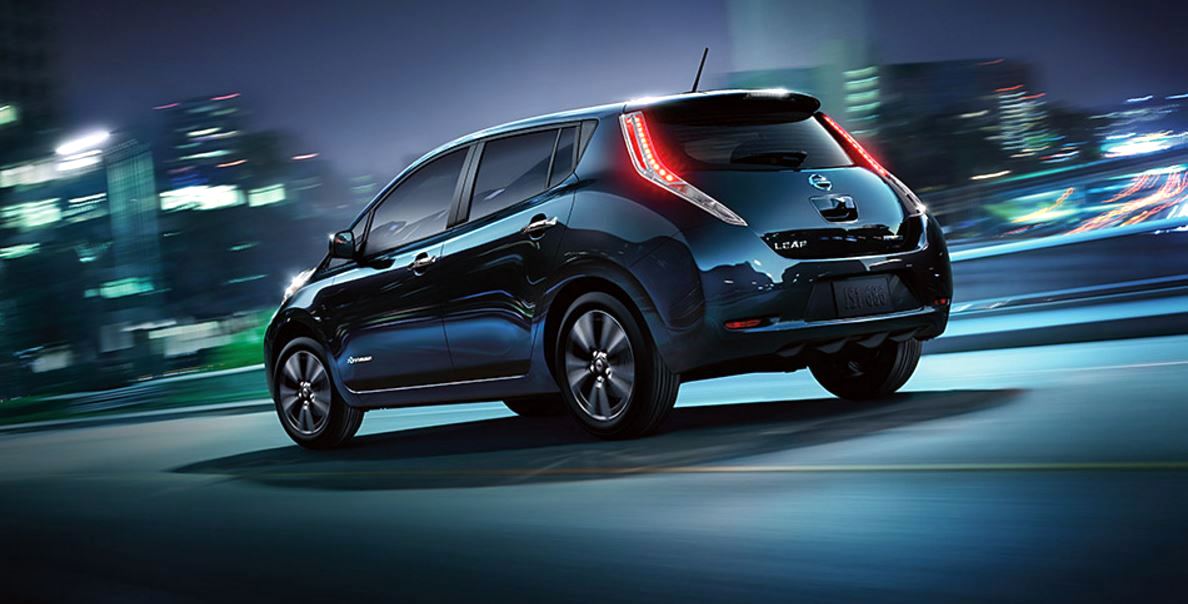After the Bolt EV, Where Do I Go?
After enjoying my 2017 Chevrolet Bolt EV for more than two-and a-half years, the time is fast approaching when the three-year lease I signed on January 8, 2017, runs out. I have to decide what’s next by the end of this year.

I know that I want another EV. Over the last several years, I’ve tested pretty much all of the offerings on the market for a week at a time, starting with a Nissan Leaf in 2011. But I really fell for battery-powered cars when I borrowed a brand-new Fiat 500e for three months in the first quarter of 2016. My baby blue hatchback, which I named Fidelio, was great fun, silent and flawless. He carried my musical gear and groceries—and even people—in the back seat. The only real downside was his 84 miles of range, although that rarely became an issue. You can read about my adventures with Fidelio here or in more detail in the January through April 2016 posts on www.stevegoesgreen.com.
That positive experience living with a battery-powered ride led me to sign up for the Chevrolet Bolt EV as soon as I heard it was coming. Before I even saw a real car, I gave the Chevy dealer a $1,000 check to reserve one of the first cars. It rolled off the truck just after the dawn of 2017, and I drove it home in the rain with a smile on my face.
Beyond the EV
Meanwhile, in late August of 2018, I attended Al Gore’s 39th Climate Reality Leadership training in Los Angeles. After three intense days of environmental awareness and education, I decided to forgo testing cars that were powered solely by fossil fuels, with the longer-term goal of focusing solely on EVs. So, my next car must be electric.
I am faced with three options:
- Buy the Bolt at the end of the lease
- Lease or buy a new EV
- Buy a used EV

A fourth option would be to not own a car and take only Uber and Lyft when needed, or switch to an electric scooter, but I still need to get to the BART station every weekday and lug musical gear around, so I haven’t listed it here. I need a car.
Options 1 through 3 are all reasonable and plausible. But the reason to consider number 3 is that I’d like to reduce my costs on the next car. The Bolt retailed at just under $44,000, and although I got back $2,500 from the State of California and $500 from PG&E, it was only by putting $10,000 down that I kept my lease payments to $332/month for three years. I don’t have a spare $10K now, and want to pay less per month, not more.
Option 1 would continue things as they are—and I would like that. The Bolt has been the perfect car for me—compact but commodious, amusing and virtually silent on the road and, at 238 miles, the range created little anxiety. It cost essentially nothing for service, and electricity is much cheaper than gasoline, especially from my new solar panels. I’m very fond of my “Bolty.”
However, pricing out a four-year loan on what’s likely to be a $24-25,000 used Bolt means payments of more than $500 a month. That would feel more painful than my current lease payments! The only good thing would be that in four years, it would be paid off. But I’d also have a seven-year-old EV, which might not be ideal. The main reason I leased Bolty in the first place was that I figured there would be more and better options in 2020.
Option 2 is the exciting choice, because I’d get to drive a new, different EV. There are a few interesting choices now. The Tesla Model 3 is appealing, although I want a hatchback, and the Model 3 only has a trunk. The hatchback Tesla Model Y would be great, but it won’t be around in January of 2020. The Mini Cooper SE electric is coming next year, but not in January, and I’ve heard the range is only about 120 miles.

It’s too early to pick from the vast array of offerings we’ll see in the next decade, but if I were choosing a new car at the end of 2019, it would likely be one of the Hyundai Kona or Kia Niro crossover EVs. They’re the right size and have a Bolt-beating 258-mile range. I’ve tested each for a week and they passed my test. Alternately, the base Nissan Leaf now offers 150 miles of range at a retail price of $30K, so buying one, with rebates and tax breaks, could mean a $20K new car—an appealing option. The latest version is much improved over the original, as well.
Option 3 is the financially responsible choice, but it entails sacrifice. If I want the same kind of range I get with the Bolt, there aren’t any reasonable options, since affordable EVs with 200 or more miles of range were unknown before the Bolt’s debut at the end of 2016. I’ve sorted through the late-model options, and have come up with these candidates, in order of preference:

- Volkswagen e-Golf – I’d look for a 2017 model off lease, because the ’17 has greater range than the earlier cars—124 miles versus 83, which would be enough for almost all of my needs. It’s a fine driving car, being a Golf, and as a hatchback, would provide the space I need. Prices would likely be under $15,000 by the end of the year, when a bunch of three-year leased cars come on the market.
- Kia Soul EV – These cars are the best iteration of the box-on-wheels genre. Plenty of room, some quirky styling, and a range of 93 miles. I got better numbers when I tested one. The 2018 model went up to 111 miles, but pricing on that car would be closer to $20K. I’ve seen older Soul EVs for under $12K.
- Nissan Leaf – The Leaf was the first mass market EV, and it’s odd looking but does the job. Range has increased from the early models to 107 miles in the 2016 or 2017 version. The all-new 2018 model jumped to 150 miles, but pricing wouldn’t be as low for one of those. I am seeing $13-14K in the cars.com listings.
- Fiat 500e – It would be a homecoming to drive a little Fiat again. Great as a short-term visitor, the Fiat would be perhaps just a little small and its range of 84 miles is marginal. But a 2016 model like Fidelio could run under $10K – making it the deal of the bunch. With a bit of searching, I might locate one in the same baby blue and white that I loved three years ago.
- BMW i3 – It’s funny looking, but the i3 is a BMW, and despite some rough-looking materials in the environmentally thoughtful interior, the car drives very well, and has enough room inside. However, starting at a more premium price new, I’d have to go back to a 2014 model to bring the cost down to $14-16K. Service costs might be higher, but electric powertrains tend to be reliable with so many fewer parts to go bad. There are always electronic concerns.
- Mercedes-Benz B250e (Electric Drive) – For something kind of special, this is an option—if I can find one. The small hatch/wagon is based on the B Class, a popular vehicle in gasoline-powered form in Europe. It was never marketed in the U.S. until it arrived as an 87-mile-range EV, and never took off as a significant seller. As with the BMW, a 2014 model would run $14-15K, or perhaps I could stretch for the 2016 at around $17,000.

That’s about it for choices. There are a few small EVs I’m not considering, such as the scarce Honda Fit EV, low-range Ford Focus EV and the odd little Mitsubishi i-MiEV. I tested all of those vehicles, and they don’t measure up to the ones on my list.
So, let’s see what happens. I still have five payments left, so it’s not urgent yet.
Related Stories You Might Enjoy—New and Used EV Options
Road Test: 2019 Hyundai Kona EV
Road Test: 2019 Kia Niro EV
Road Test: 2019 Nissan Leaf Plus
Road Test: 2017 Chevrolet Bolt EV
Road Test: 2017 Fiat 500e
Flash Drive: Tesla Model 3 Long Range
Road Test: 2017 Volkswagen e-Golf
Road Test: 2017 BMW i3
Road Test: 2016 Nissan Leaf
Road Test: 2016 Kia Soul EV
First Drive: 2016 Mercedes-Benz 250e

1 thought on “Personal: In Search of My Next Electric Car”